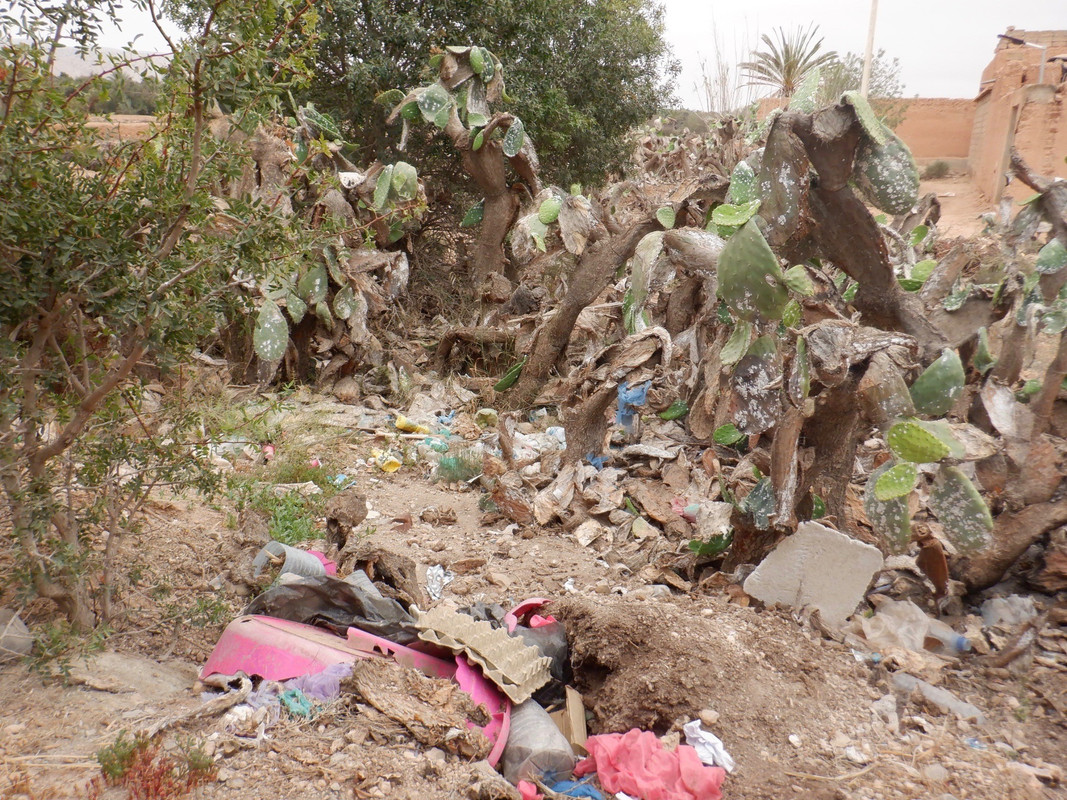By Keely Fitzsimmons

Cacti in the Souss-Massa region were devastated by the Dactylopius Opuntiae pest. Photo Credit: Keely Fitzsimmons
This past Wednesday, I attended a virtual Sustainable Development Solutions Network (SDSN) workshop on how to use the SDG Impact Assessment Tool. SDSN member organizations from around the world, including the High Atlas Foundation (HAF), were invited to participate in this two-hour long workshop and familiarize themselves with the online tool. Although I am generally not enthusiastic about lengthy Zoom meetings, the opportunity to represent HAF in this workshop was one I refused to miss. I have extensively researched the United Nations Sustainable Development Goals (SDGs) as a part of my undergraduate capstone project and still have unanswered questions regarding the United Nations’ assessment of sustainable development. When the CEO of HAF, Yossef Ben-Muir, offered me the opportunity to attend the SDG Impact Assessment Tool workshop on behalf of the organization, I eagerly accepted as it was a chance to get some of my lingering questions answered.
According to the 2022 Sustainable Development Report, the Middle East and North Africa are only on track to reach two of the seventeen SDGs by 2030. Every other region in the world is experiencing widespread underperformance in the SDGs as well. In my capstone project and with my work for HAF, I am driven by the question: What is responsible for this trend of underperformance? Further, what can sustainable development organizations like HAF do to improve their impact on the SDGs? And to what extent is the United Nations, the most influential intergovernmental organization, at fault for the world’s alarmingly poor SDG performance? The most convincing explanation I have found lies in the assessment of sustainable development progress. This entails how civil society organizations, like HAF, alongside other stakeholders evaluate their contributions to sustainable development progress in addition to how the United Nations monitors and measures SDG performance. While the SDG Index, for example, attempts to provide an accurate, numerical representation of each country’s progress towards reaching the SDGs, the metric is flawed by data gaps and inadequate indicators. Other official dashboards and reviews are similarly hindered. The SDG Assessment Tool, however, provides a potential solution to limitations in measuring sustainable development progress and helps further standardize the assessment of sustainable development. With a rigid, systemized, and accessible way for entities to track their impact on the SDGs, data collection expands and groups can more effectively align their work with the SDGs, thus ultimately advancing sustainable development. Before the workshop I thought to myself, “Maybe this is the saving grace for reaching the SDGs!”
I joined the Zoom meeting for the workshop a few minutes late. I had to scramble to find Wifi and a quiet place to set up my laptop as I had been attending another conference at University Sultan Moulay Slimane. Once I finally entered the call, I felt a wave of relief. Then, I quickly noticed that there were much fewer attendees than I had expected – the original registration email noted a cap of sixty attendees; there were around twenty on the call. Truthfully, it was somewhat disappointing seeing fewer participants than expected, especially as I recognized the potential of the SDG Impact Assessment Tool. Some of this disappointment eventually dissipated when other attendees began asking questions about the tool and sharing where they were from. Oslo, Mexico City, and Atlanta were some of the places represented in the workshop. The exciting mix of backgrounds and perspectives made me optimistic about the .
As the workshop went on, a handful of questions were asked to the SDSN facilitators about the usefulness of the SDG Assessment Tool in relation to their institutions or organizations. Most responses were vague. I believe this is partly because the SDG Assessment Tool is open-ended and its application varies by case, and partly because the SDG targets themselves can be vague and ambiguous. Personally, I found some ease in mentally connecting the usefulness of the SDG Assessment Tool to the activities of HAF. This ease is largely attributed to my prior knowledge of the SDGs and the inherent straightforwardness of connecting a sustainable development organization to their sustainable development impact. Once we transitioned to the small group exercise portion of the workshop, one of my group members still struggled to realize how her university would benefit from using the tool. The sample case we examined focused on the SDG impact of a city council’s decision, which provided our group little clarity on applying the tool to the work of a private organization. When an SDSN facilitator joined our breakout room, our group prompted him for clarification on how the SDG Assessment Tool can best be used by universities and civil society organizations. Again the answer was vague. This led me to question if this version of the tool really can be used by “anyone who wants to learn more about their impact on the SDGs.”
By the end of the workshop, I developed a fair grasp of the SDG Assessment Tool. My main takeaways were that such a tool will promote sustainable development, but the current version needs refinements to be more clear and systemized. The SDG Assessment Tool will encourage groups to critically assess their SDG impacts and strategize how to improve them, especially as the tool requires users to consider indirect and direct impacts and provide explanations for their impact on all seventeen goals. Additionally, I believe that the tool can be improved by providing specific direction to different user groups through outlining relevant examples, indicators, and activities. I firmly believe that the SDG Assessment Tool can be the saving grace for SDG advancement, but adjustments need to be made to position it as an easy-to-use and attractive resource for all users.
what I could learn from other organizations and their efforts to advance the SDG





